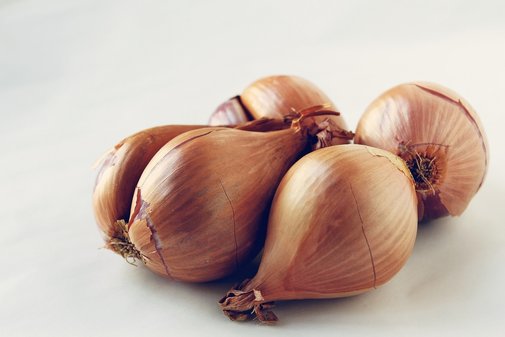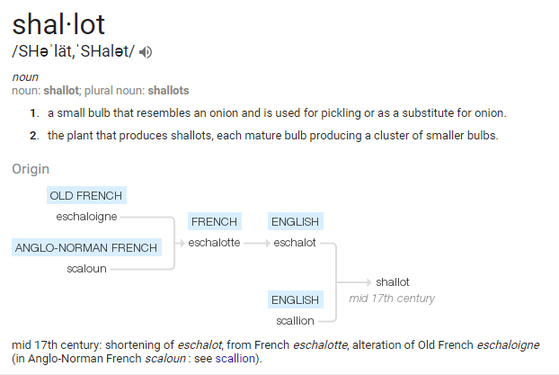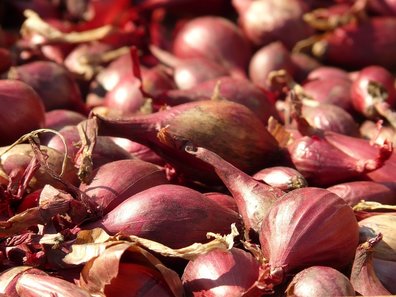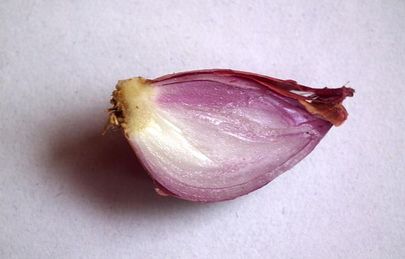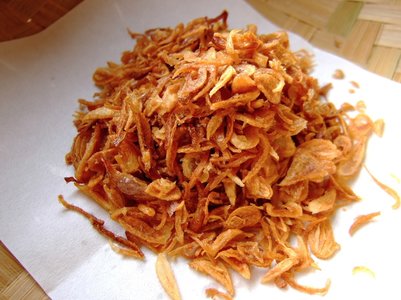So to kick off this series I'm starting with something you may have seen or heard of, but probably have not actuallybought - Shallots. Let's dive on in.
Shallots, like onion and garlic, come in the form of bulbs with a paper like skin that needs to be peeled before using. When shopping for shallots, you will find them probably near the onions and garlic section in fresh produce. Look for shallots with dry paper wrappers and tight, even skin. They should be firm to the touch and not at all mushy. If the outer layers of paper are loose that is ok, as long as the lowest layer is still firmly attached.
After you get them home, store your shallots like you would store garlic and onion - in a cool, dry, dark place. If you have a drawer or cabinet in a cooler part of your kitchen, that would be a good place. If stored properly, your shallots will last at least a week or two no problem.
Use
So now you bought them and they're cozy away in your home. How do you use those shallots? Well, you have a few options.
2. Salad Dressings and Sauces - Mince up your shallot nice and fine to give an onion-y kick to your salad dressings or add to sauces to give a little bit of freshness and bite. Many French Vinaigrettes (Yes, the French do have a love affair with shallots), call for minced shallots for flavour. In these applications, keep the mince small so your diners don't get big bites of the stuff.
So, as you can tell, the less known cousin of the onion is pretty useful, eh? And because the French love it so much, you know it has to be good (I kidd, I kidd....not really). While it may not be the most exotic ingredient in the world, it's a good step towards the more unique and less known foods available at most every grocery store. Looking for a quick, easy way to start introducing shallots into your diet? - try out this quick vinaigrette recipe for your next spring time dinner on the balcony.
Serves 3-5
Ingredients:
- 1 Small or 1/2 large shallot, minced fine
- 5 Tablespoons Olive Oil
- 2 Tablespoons Red Wine Vinegar
- 1 teaspoon dijon or coarse brown mustard
- 1 teaspoon sugar or honey (optional)
- Salt and Pepper to Taste
Directions:
- In a large bowl, combine all the ingredients and mix well with a whisk until fully emulsified (no separation between the oil and vinegar)
- Serve immediately or store covered in the fridge for up to a day. Re-whisk before serving.
Enjoy Y'all. Stay Hungry.
